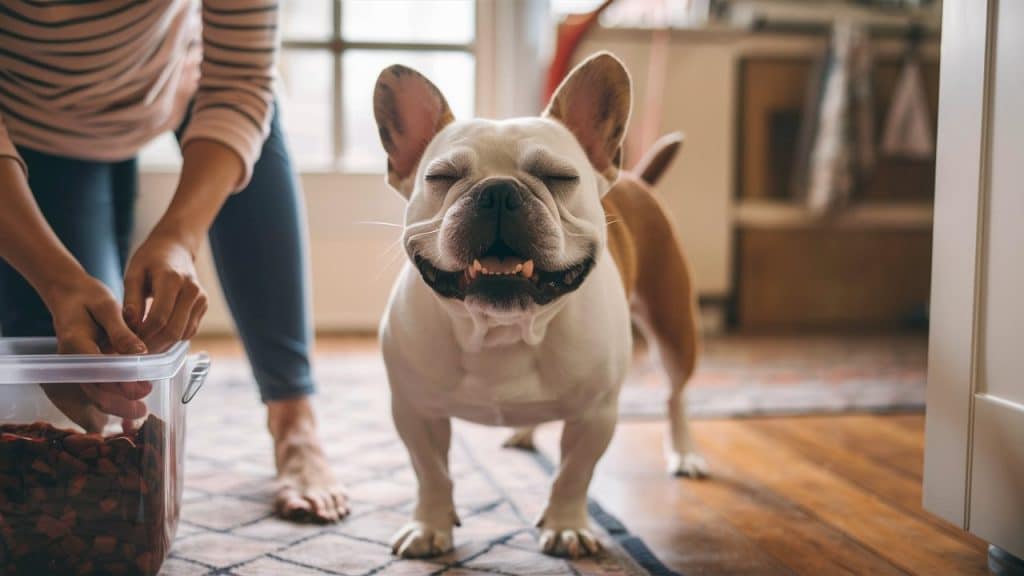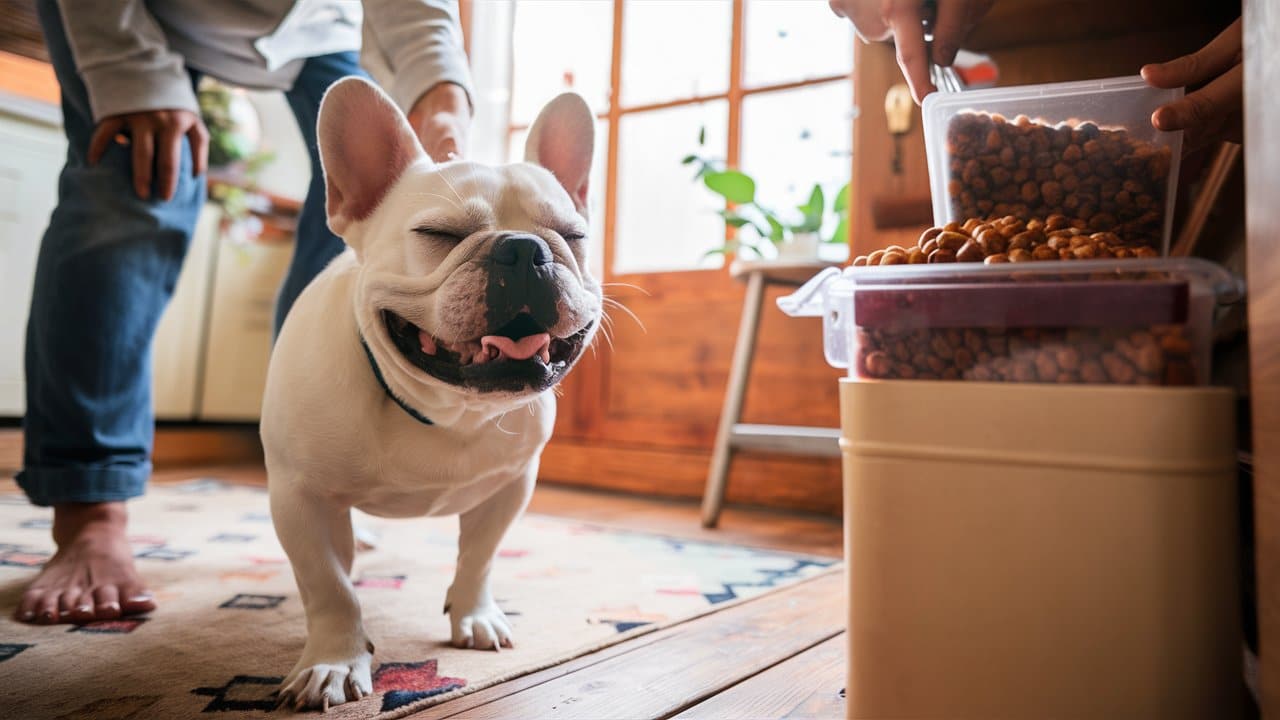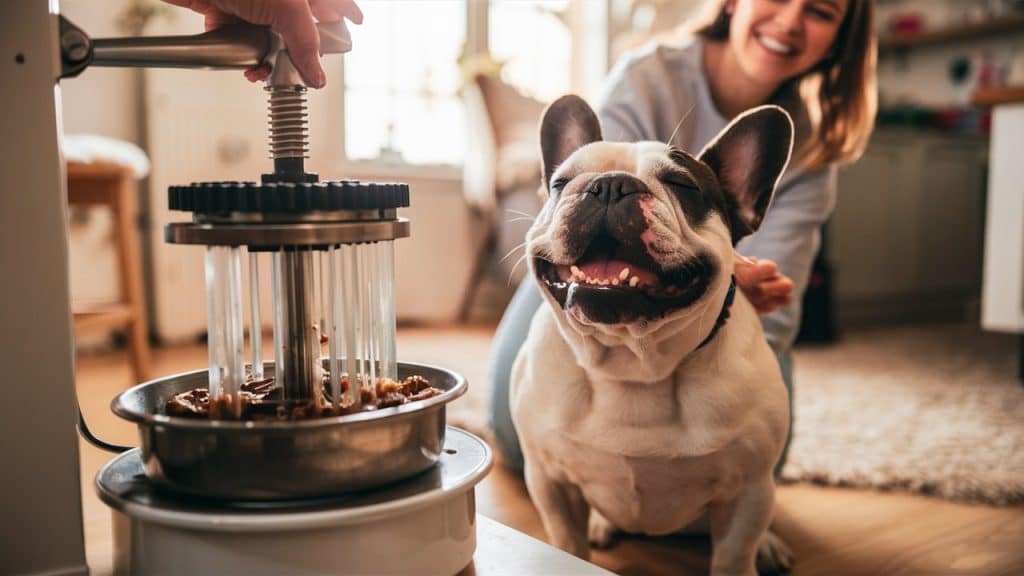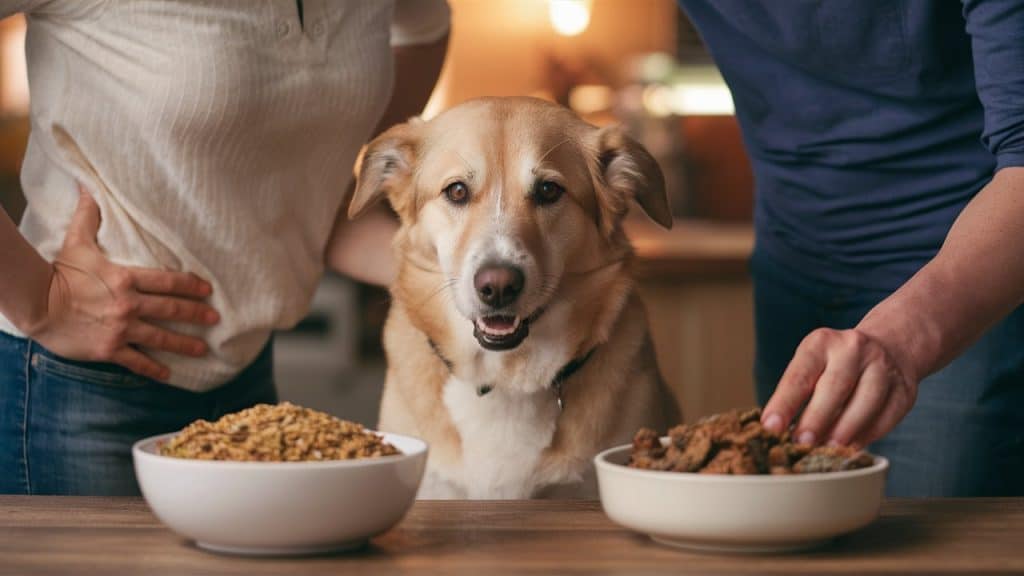How to Store Cold Pressed Dog Food
Trust me, when it comes to cold pressed dog food, it's a whole different ball game. You see, cold pressed dog food is made using a special process that preserves the nutrients and goodness of the ingredients, making it super healthy for your pup.
But and this is a big but, it's also super sensitive to temperature and humidity changes, which means it needs to be stored properly to keep it fresh and safe for your dog to eat.
So, if you're like me and want to give your dog the best possible start in life, you need to know how to store cold pressed dog food properly. From the best containers to use, to the ideal storage locations, we'll dive into all the tips and tricks you need to keep your dog's food fresh and healthy.
Now, I know some of you might be thinking, “But I've been storing my dog's food just fine in the pantry.” And, fair enough, you might have been getting away with it so far. However, the thing is, cold pressed dog food is a bit like a delicate flower – it needs to be handled with care and attention to thrive.
Looking for prime cold pressed dog food. Check out our recommended options here….

So, even if you think you're doing okay, trust me, there are some simple changes you can make to ensure your dog's food stays fresh and healthy for longer.
Want to know the best part? By following these simple tips, you'll not only be keeping your dog's food fresh, but you'll also be saving yourself money in the long run by reducing waste and extending the shelf life of your dog's food. It's a win-win!
Key Takeaways:
- Store in a cool, dry place: Keep cold pressed dog food away from direct sunlight and humidity to maintain its freshness and nutritional value.
- Use an airtight container: Protect the food from oxidation and moisture by storing it in an airtight container, such as the original bag or a dedicated storage bin.
- Handle with care and check expiration dates: Use a clean scoop, wash it regularly, and check the expiration date to ensure the food remains fresh and safe for your dog to eat.
When owning a dog there are plenty of things that end up on the shopping list. Poo bags, treats, toys and, most importantly, food! We often spend a lot of time and money selecting our canine’s food, but are we storing it correctly?
https://www.animalfriends.co.uk
Creating the Perfect Storage Environment
To keep your cold pressed dog food fresh and nutritious, you need to create an ideal storage environment. This means choosing the right location, controlling temperature and humidity, and using the right storage containers.
Choosing the Right Location
Storage areas with low traffic and minimal exposure to direct sunlight are ideal. Avoid storing cold pressed dog food near heat sources, ovens, or dishwashers, as they can generate heat and moisture.
Controlling Temperature and Humidity
Temperature and Humidity Guidelines
| Temperature | Between 50°F and 70°F (10°C and 21°C) |
| Humidity | Below 60% |
The ideal storage temperature for cold pressed dog food is between 50°F and 70°F (10°C and 21°C), with a relative humidity below 60%. This helps prevent moisture accumulation and maintains the food's nutritional value.
It's vital to maintain a consistent temperature and humidity level to prevent fluctuations that can affect the food's quality. If you live in an area with high humidity or extreme temperatures, consider investing in a climate-controlled storage unit or a thermometer/hygrometer to monitor the conditions.
Handling with Care
Clearly, transferring and storing cold pressed dog food requires some finesse to maintain its quality and freshness.
Transferring Food Safely
To avoid contamination, I always use a clean, dry scoop when transferring the food to a container – never the dog's bowl! This simple habit helps prevent bacteria and other unwanted guests from getting into the food.
Maintaining Hygiene
Transferring food safely is just the beginning; maintaining hygiene is crucial to keeping the food fresh and healthy for your furry friend.
With regular cleaning and sanitizing of the scoop, container, and surrounding area, you can rest assured that your dog's food is stored in a clean environment. I like to wash my scoop with soap and warm water after each use and dry it thoroughly to prevent any moisture buildup.
Shelf Life and Spoilage
Not all cold pressed dog foods are created equal, and their shelf life can vary significantly. It's crucial to understand the expiration dates and signs of spoilage to ensure your furry friend gets the best nutrition possible.
Understanding Expiration Dates
Lifetime of freshness is what you want for your dog's food. Expiration dates are crucial in determining the shelf life of cold pressed dog food. Always check the packaging for the recommended storage period and expiration date. Keep in mind that improper storage can shorten the shelf life, so it's vital to follow the storage guidelines.
Identifying Signs of Spoilage
With great food comes great responsibility. Be on the lookout for signs of spoilage, such as an off smell, slimy texture, or mold growth. If you notice any of these signs, it's time to say goodbye to that batch of food.
Plus, keep an eye out for changes in your dog's behavior or health, like digestive issues or lethargy, which could be indicative of spoiled food. If you're unsure about the freshness of the food or your dog's health, consult with your veterinarian for guidance. Be mindful of, it's always better to err on the side of caution when it comes to your furry friend's well-being.
Prioritize Your Dog's Health
Many of us pet owners consider our furry friends to be part of the family, and rightly so! We want the best for them, and that includes providing them with the highest quality food. I know I do! Cold pressed dog food is an excellent choice, packed with nutrients and made with minimal processing.
But did you know that proper storage is crucial to maintaining its freshness, flavor, and nutritional value?
I mean, think about it – improper storage can lead to spoilage, rancidity, and loss of crucial nutrients, which could affect your dog's health. As a responsible pet owner, it's up to us to ensure that our dogs get the nutrients they need to thrive. By following these simple storage guidelines, you can rest assured that your dog is getting the best possible nutrition.
And let's not forget, a healthy dog is a happy dog! By prioritizing your dog's health, you're not only ensuring they stay healthy, but you're also strengthening your bond with them. I know my vet has always told me that a healthy diet is the foundation of a happy and healthy pet. So, let's get it right!
By storing cold pressed dog food properly, you're showing your dog that you care about their well-being and want the best for them. And trust me, they'll thank you for it! So, take the time to learn how to store cold pressed dog food correctly, and you'll be rewarded with a happy, healthy, and thriving furry friend.
Final Words
Upon reflecting on the importance of storing cold pressed dog food, I realize that it's not just about keeping the food fresh, but also about showing love and care for our furry friends.
By following these simple tips, you're not only preserving the nutritional value of the food, but also ensuring your dog stays healthy and happy. So, take the extra minute to store it right, and your dog will thank you for it. Trust me, it's worth it!
People also ask….
How long does cold pressed dog food last?
The shelf life of cold pressed dog food varies between brands, but it's usually several months. Keep an eye on the expiration date and check for signs of spoilage, like an off smell, discoloration, or mold. If you notice any of these, it's time to toss the food!
Can I store cold pressed dog food in the fridge or freezer?
While it might seem like a good idea to store cold pressed dog food in the fridge or freezer, it's not recommended. The moisture and temperature fluctuations can affect the food's texture and nutritional value. Instead, stick to a cool, dry place like your pantry or kitchen cupboard.
What happens if I don't store cold pressed dog food properly?
Oh dear, improper storage can lead to spoilage, rancidity, and loss of necessary nutrients! This could affect your dog's health, so it's crucial to follow the storage guidelines. If you're unsure, consult with your vet or the manufacturer's instructions. Keep in mind, proper storage is an act of love towards your pet!




